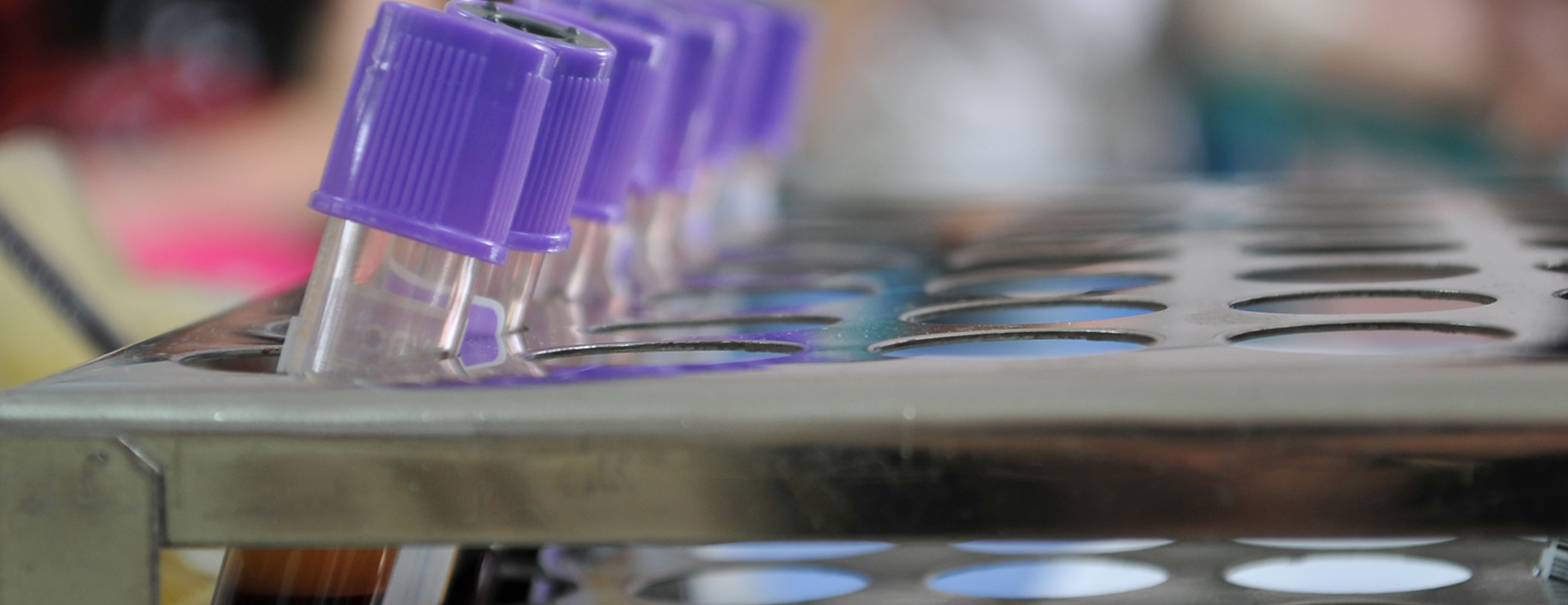
Factor VIII assay
Definition
The factor VIII assay is a blood test to measure the activity of factor VIII. This is one of the proteins in the body that helps the blood clot.
Alternative Names
Plasma factor VIII antigen; Antihemophilia factor; AHF
How the Test is Performed
A
How to Prepare for the Test
No special preparation is needed.
How the Test will Feel
When the needle is inserted to draw blood, some people feel moderate pain. Others feel only a prick or stinging. Afterward, there may be some throbbing or slight bruising. This soon goes away.
Why the Test is Performed
This test is used to find the cause of too much bleeding (decreased blood clotting). Or, it may be ordered if a family member is known to have
Normal Results
A normal value is 50% to 200% of the laboratory control or reference value.
Normal value ranges may vary slightly among different laboratories. Some labs use different measurements or may test different samples. Talk to your health care provider about the meaning of your specific test results.
What Abnormal Results Mean
Decreased factor VIII activity may be due to:
- Hemophilia A (a bleeding disorder caused by a lack of blood clotting factor VIII)
- Disorder in which the proteins that control blood clotting become over active
disseminated intravascular coagulation (DIC) - Presence of a Factor VIII inhibitor (antibody)
Von Willebrand disease (another type of bleeding disorder)
Increased activity may be due to:
- Older age
- Diabetes
- Liver disease
- Inflammation
- Pregnancy
- Obesity
Risks
There is little risk involved with having your blood taken. Veins and arteries vary in size from one person to another, and from one side of the body to the other. Obtaining a blood sample from some people may be more difficult than from others.
Other risks associated with having blood drawn are slight, but may include:
- Excessive bleeding
- Fainting or feeling lightheaded
- Multiple punctures to locate veins
- Hematoma (blood accumulating under the skin)
- Infection (a slight risk any time the skin is broken)
This test is most often done on people who have bleeding problems. The risk of too much bleeding is slightly greater for people with bleeding problems than others.
References
Carcao M, Moorehead P, Lillicrap D. Hemophilia A and B. In: Hoffman R, Benz EJ, Silberstein LE, et al, eds. Hematology: Basic Principles and Practice. 7th ed. Philadelphia, PA: Elsevier; 2018:chap 135.
Chernecky CC, Berger BJ. Factor VIII (antihemophilia factor, AHF) - blood. In: Chernecky CC, Berger BJ, eds. Laboratory Tests and Diagnostic Procedures. 6th ed. St Louis, MO: Elsevier Saunders; 2013:504-505.
Napolitano M, Schmaier AH, Kessler CM. Coagulation and fibrinolysis. In: McPherson RA, Pincus MR, eds. Henry's Clinical Diagnosis and Management by Laboratory Methods. 23rd ed. St Louis, MO: Elsevier; 2017:chap 39.
Review Date: 01/29/2019
The information provided herein should not be used during any medical emergency or for the diagnosis or treatment of any medical condition. A licensed physician should be consulted for diagnosis and treatment of any and all medical conditions. Call 911 for all medical emergencies. Links to other sites are provided for information only -- they do not constitute endorsements of those other sites. Copyright ©2019 A.D.A.M., Inc., as modified by University of California San Francisco. Any duplication or distribution of the information contained herein is strictly prohibited.
Information developed by A.D.A.M., Inc. regarding tests and test results may not directly correspond with information provided by UCSF Health. Please discuss with your doctor any questions or concerns you may have.





